Lynx: The Elusive Feline of Forests and Mountains
The lynx is a captivating wild cat, known for its elusive nature and elegant presence. It thrives in the remote, rugged corners of the Earth, perfectly adapted to a life of solitude. With its distinctive tufted ears and stealthy movements, the lynx has long intrigued humans. Its intense gaze draws you in, making it hard to look away. This fascinating creature even appears in ancient Egyptian mythology. Today, it plays a vital role in conservation efforts in Scotland. In this article, we’ll explore the world of the lynx, delving into its evolution and its important place in modern ecosystems.
Table of Contents
Scientific Classification
- Kingdom: Animalia
- Phylum: Chordata
- Class: Mammalia
- Order: Carnivora
- Family: Felidae
- Genus: Lynx
- Species: Varies by region (see subspecies below)
Description / Physical Description
A lynx is a medium-sized wild cat that stands out with its distinctive features. One of its most notable traits is its triangular ears, which are adorned with long black tufts. It also sports a short tail tipped in black and large paws that resemble snowshoes, perfect for navigating snowy terrains.
The size of a lynx can vary depending on the species. They typically measure between 80 to 130 cm in body length, with the Eurasian lynx (Lynx lynx) being the largest of the bunch. In contrast, the Canada lynx (Lynx canadensis) and the Iberian lynx (Lynx pardinus) are on the smaller side. Generally, male lynxes are larger than females, with weights reaching up to 30 kg.
Lynxes are equipped with thick fur that keeps them warm in chilly climates. Their coats usually come in soft hues like tawny, grey, or rufous, often featuring spots or streaks that help them blend seamlessly into their surroundings.

Range & Distribution
Lynxes roam across extensive, often fragmented territories in the Northern Hemisphere.
The Canada lynx is a prominent inhabitant of the boreal forests found in Canada and Alaska.
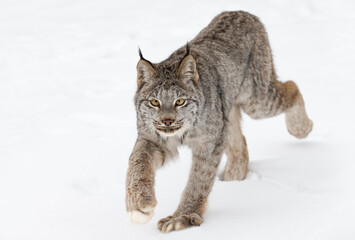
Eurasian lynx can be spotted in regions like Scandinavia, Eastern Europe, the Caucasus, and parts of Central Asia.
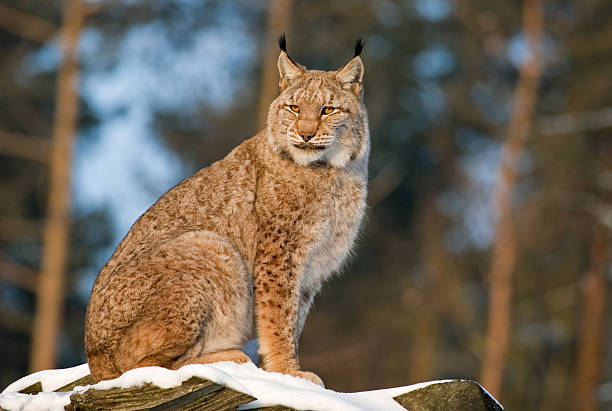
Once on the brink of extinction, the Iberian lynx is now unique to the Iberian Peninsula.
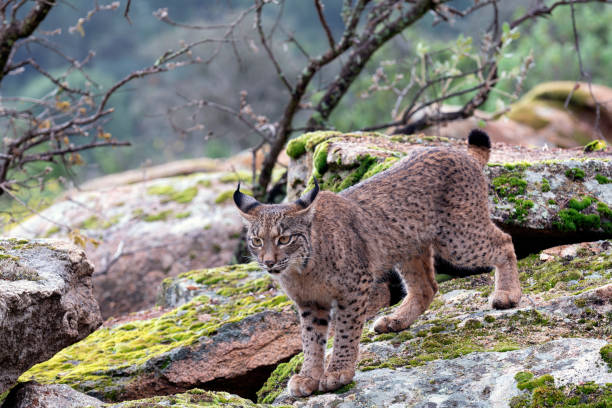
The bay lynx, commonly known as the bobcat (Lynx rufus), is widespread throughout North America.
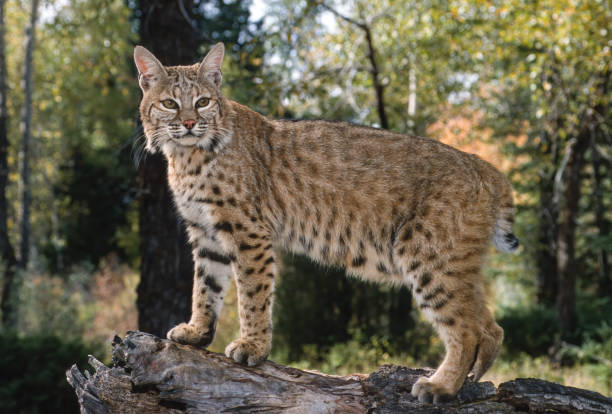
Reintroduction initiatives have successfully brought lynxes back to Scotland, with the goal of restoring ecological harmony.
Historical texts and myths may have confused the Egyptian lynx with other species, and it might also represent cats in northern Africa.

Habitat
The lynx is a remarkably adaptable creature, with each species having its own preferred habitats:
The Canada lynx thrives in snowy coniferous forests.
The Iberian lynx is drawn to Mediterranean shrublands and open woodlands.
The Eurasian lynx makes its home in temperate and boreal forests, particularly in mountainous areas.
Bay lynx are incredibly versatile, finding their place in deserts, swamps, forests, and even urban edges.
Each lynx selects a habitat that supports its survival, often opting for locations with ample cover, access to water, and a good supply of prey.
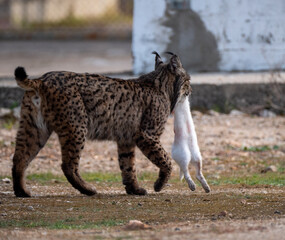
Diet
The lynx is a fascinating carnivorous predator known for its solitary hunting style. Here’s a look at its primary diet:
– Canada lynx: This species mainly feasts on snowshoe hares.
– Eurasian lynx: It has a broader menu, including deer, foxes, rabbits, and even birds.
– Iberian lynx: While it favors European rabbits, it can adapt its diet during tough times.
– Bay lynx: This lynx enjoys a diverse diet, munching on rodents, small mammals, and birds.
With its sharp hearing, enhanced by those distinctive ear tufts, and its stealthy movements, the lynx is truly a master of ambush hunting.
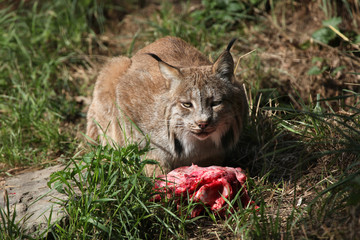
Behaviour / Lifestyle
When it comes to their territory, these big cats can cover vast expanses—sometimes stretching over 100 square kilometers! They keep a close watch on their domain, marking their boundaries with urine or by scratching trees with their claws.
Interestingly, these felines aren’t very chatty. They might growl, hiss, yowl, or even purr, but you won’t hear them much otherwise. However, during mating season, their eerie calls can resonate through the valleys and forests, creating a haunting symphony of sounds.
Lifespan
In the wild, lynxes usually have a lifespan of about 10 to 14 years. That said, some Canadian lynx and Eurasian lynx have been known to live as long as 17 years. When kept in captivity, where they don’t face natural predators and have a steady food supply, they can even reach up to 21 years!
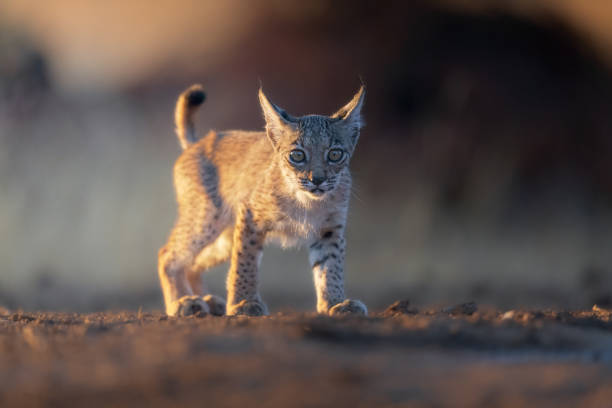
Adaptations
Adaptations in lynx species are fascinating and crucial for their survival in tough environments:
– Large paws: They function like snowshoes, making it easier for lynxes to walk on top of snowdrifts.
– Ear tufts: These help enhance their directional hearing, which is essential for tracking down prey.
– Short tail: A shorter tail minimizes the risk of frostbite in frigid climates.
– Camouflaged coat: Their fur blends seamlessly with the surroundings, allowing for stealthy movements.
– Keen vision: Lynxes can spot prey from great distances, even in dim light.
These unique physical characteristics showcase how the lynx has evolved to excel in hunting and surviving in the wild.
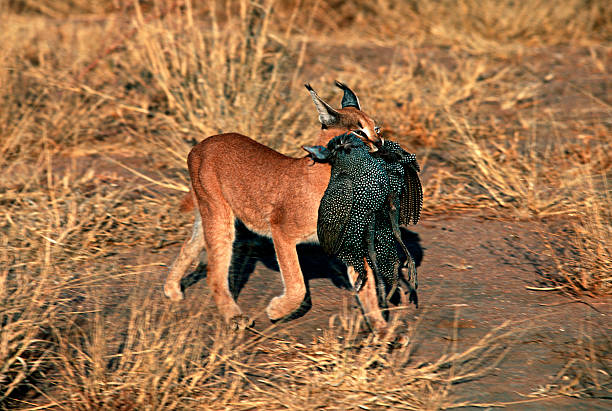
Mating & Reproduction / Reproduction & Lifecycle
Lynxes usually mate once a year, typically during late winter or early spring. After a gestation period of about 60 to 70 days, the females give birth to a litter of 1 to 4 kittens, often in hidden dens to keep them safe.
The kittens are born blind and completely dependent on their mother for care.
Weaning happens around the age of 2 months.
The young lynxes stay with their mother for nearly a year before they venture out to establish their own territories.
The success of their reproduction largely hinges on the availability of prey, which is particularly crucial for lynxes in Africa and the Iberian lynx. They thrive in delicate ecosystems.
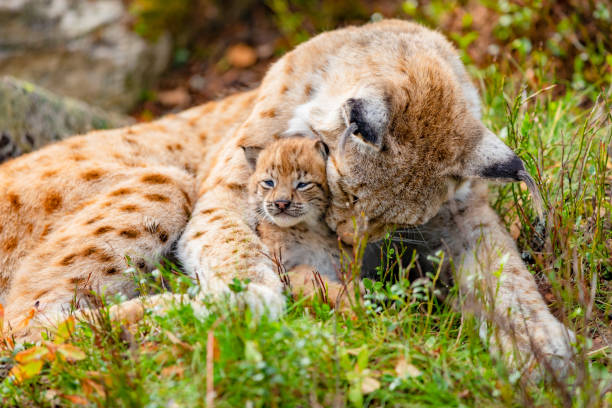
Predators
- Adult lynxes are at the top of their food chain, but they still face some dangers:
- Wolves, cougars, and bears can take down lynx, particularly the younger ones.
- Humans are their biggest threat, mainly through habitat destruction, trapping, and accidents on the road.
- Kittens can also become targets for foxes, eagles, or even other lynxes during territorial fights.
Conservation Status
The conservation status of lynx species shows quite a bit of variation:
Iberian lynx: Once critically endangered in the early 2000s, this species is now on the mend thanks to dedicated conservation efforts.
Canada lynx: While it’s classified as “Least Concern,” it’s still feeling the heat from climate change.
Eurasian lynx: This species is stable in some regions, but in others, it’s facing a decline due to habitat loss.
Bay lynx (bobcat): These guys are widespread and generally doing well.
Rewilding initiatives, like the lynx project in Scotland, are working to bring these elusive creatures back to their natural homes, which in turn helps to restore ecological balance.

Interesting Facts
- Did you know that the crossword clue for bay lynx often leads to “bobcat”? It’s a common term used in North America.
- While lynx can be kept as pets in certain regions, the topic can spark quite a debate. Many areas have restrictions on ownership since these creatures are inherently wild.
- In ancient Egypt, the Egyptian lynx was likely a symbol of keen eyesight or hidden wisdom.
- These fascinating animals can leap up to 2 meters high, snatching birds right out of the air!
- Their eyes are specially designed for night vision, featuring a reflective layer that enhances their ability to see in dim light.
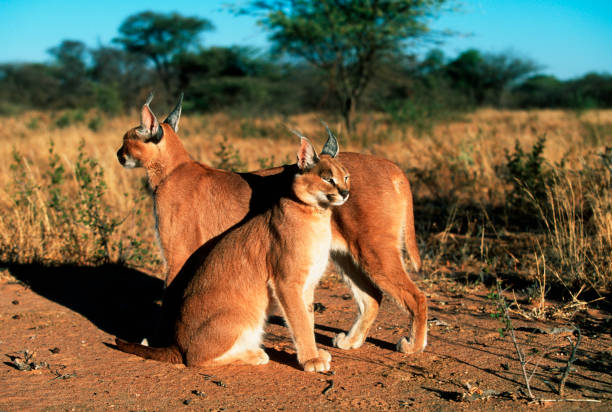
As Pets
Lynxes are truly stunning and fascinating creatures. But having one as a pet raises a lot of ethical and legal concerns.
These animals aren’t domesticated.
They need vast territories, specific diets, and plenty of mental stimulation.
They can also show aggression, particularly when they reach sexual maturity.
The legality of owning a lynx varies depending on where you live, and it often requires special licenses or permits.
Wildlife experts and conservationists strongly advise against keeping them as pets.

Classification of Species
The genus Lynx contains four recognized species:
- Lynx lynx – Eurasian lynx
- Lynx canadensis – Canada lynx
- Lynx pardinus – Iberian lynx
- Lynx rufus – Bobcat (often called bay lynx in historical references)
Each exhibits unique adaptations to its environment while sharing the core lynx characteristics.
Subspecies
Within these species, several subspecies exist:
- Lynx lynx lynx – Northern Eurasian lynx
- Lynx lynx balcanicus – Balkan lynx
- Lynx canadensis subsolanus – Newfoundland lynx
- Lynx pardinus templei – Proposed Iberian subspecies
- Lynx rufus floridanus – Southeastern bobcat
- Lynx rufus californicus – Californian bobcat
Taxonomic revisions are ongoing as genetic studies refine our understanding of their lineages.
Colours
Lynx coats vary widely by species, season, and geography:
- Winter coats: Thicker, paler—gray to silver-white.
- Summer coats: Thinner, often reddish-brown or golden.
- Spots and streaks: Present in varying degrees; most prominent in the Iberian and bay lynx.
- Tail tip: Universally black, used as a visual signal.
The muted colors help with camouflage. Individual differences show genetics and the environment.The lynx is a fascinating creature that roams from the snowy forests of Canada all the way to the sun-drenched scrublands of Iberia. This elusive wild cat is not just a beautiful sight; it plays a vital role in maintaining the balance of its ecosystem. Plus, it has captured the imagination of people in stories across various continents.

